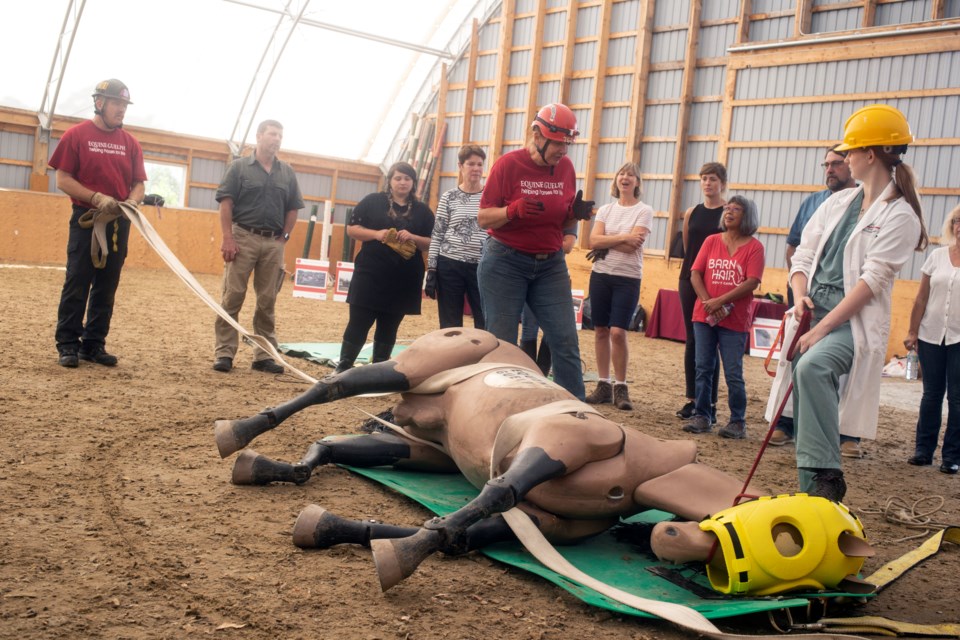About 200 people from all over the world are at the University of Guelph this week for the annual International Society of Equitation Science conference.
Whether it’s an overturned horse trailer on the highway or rescuing large animals from a barn fire, special training is required to move the animals safely.
On Sunday, Equine Guelph conducted a workshop on large animal rescue for about 60 people attending this week’s conference.
The workshop is often conducted for area first responders and people working with large animals, said Susan Raymond, communications and programs officer for Equine Guelph.
“We have done training for vet hospitals, the racing industry, fire departments and mounted police, paramedics — and anybody else who works within the first responder system,” said Raymond.
Equine Guelph is a not-for-profit which, among other things, offers education, healthcar epromotion and research for centred around horses.
The centrepiece of this particular workshop is a 700-pound horse mannequin that is used to simulate a real horse in danger.
The horse was purchased from a specialized supplier in the U.K., said Raymond.
“He came in a shipping container,” she said.
Attendees were taught some theory on large animal rescue before getting hands on to learn the tips and tricks of the industry.
Leading the workshop was Dr. Rebecca Gimenez Husted, workshop instructor and President of Technical Large Animal Emergency Rescue Inc., based in Georgia.
Gimenez Husted was also the lead instructor when Equine Guelph’s first Technical Large Animal Emergency Rescue Awareness and Operations Level Course was hosted in 2014.
“She really got us started in this program a few years ago,” said Raymond of Gimenez Husted.
Attendees of the workshop were taught how to manipulate a fallen horse to put straps safely underneath and eventually get the animal on to a sort of stretcher to be moved.
Gimenez Husted cautioned attendees from using too much force on areas like the neck or tail of the horse when moving them.
“I have seen a horse’s tail pulled right off at the base — trust me, no one wants to see that,” Gimenez Husted told attendees.
She said good old-fashioned people power is preferred — and often better for the horse — than lifting by a winch or helicopter.
Raymond said it’s important to call the fire department and to have a veterinarian on scene, if possible, to have control of what could become a messy scene.
“Large animal owners work best if they work within the system and ask for help than trying to rescue something on their own. Then they may put themselves in a dangerous situation and may have to be rescued as well,” said Raymond.
People have come from all over the world to attend this week’s conference — from Australia and Japan to the U.K., United States and from all across Canada.
Andrew Kelly is a coach and trainer for equine sports like showjumping and dressage who is based in Australia. He came to Guelph this week for the conference.
“The conference was held in Australia last year and I didn’t quite get to it,” said Kelly.
Because he deals with horses on a daily basis, Kelly said he had an interest in learning more about large animal rescue and signed up for the workshop.
“Having an understanding of the different procedures you might follow and the awareness — it’s really important,” said Kelly.
The International Society of Equitation Science conference wraps up on Wednesday.
